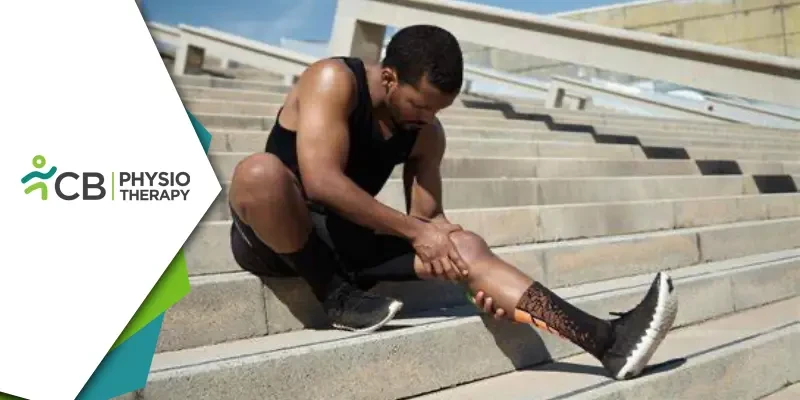Pes anserinus, often referred to as "goose's foot," is a term used to describe the conjoined tendons of three muscles that insert onto the anteromedial (front and inner) surface of the proximal tibia. These muscles are the sartorius, gracilis, and semitendinosus. Pes anserinus bursitis or tendinitis, a common condition among athletes and the elderly, arises when this area becomes inflamed, leading to pain and restricted movement. Effective management often involves physiotherapy, which plays a pivotal role in alleviating symptoms and promoting recovery.
Understanding Pes Anserinus Syndrome
The pes anserinus is situated approximately 5-7 cm below the medial tibial joint line. The name "goose's foot" is derived from the structure's resemblance to a webbed foot. Each of the three tendons originates from different muscles:1: Sartorius: A long, thin muscle that runs down the length of the thigh. It is involved in flexion, abduction, and lateral rotation of the hip, as well as flexion of the knee.
2: Gracilis: This is the most medial of the thigh muscles, contributing to hip adduction and knee flexion.
3: Semitendinosus: Part of the hamstring group, it functions in hip extension and knee flexion.
The pes anserinus stabilizes the medial aspect of the knee joint, working in conjunction with other structures to maintain knee integrity during various activities. Pes anserinus syndrome can result from several factors, including activities that involve repetitive knee flexion, such as running, cycling, or climbing stairs, can lead to inflammation, direct impact to the medial knee can damage the bursae or tendons, weakness or tightness in the muscles around the hip and knee can contribute to improper mechanics and increased strain on the pes anserinus, conditions like flat feet, obesity, and valgus knee deformities can alter biomechanics and increase stress on the pes anserinus area.
Common symptoms include pain and tenderness over the inner knee, swelling, and a sensation of instability. The pain often exacerbates with activities like climbing stairs, running, or even prolonged walking.
Role of Physiotherapy in Managing Pes Anserinus Syndrome
Physiotherapy is crucial in managing pes anserinus syndrome, focusing on reducing pain, inflammation, and preventing recurrence. Here are the key components of physiotherapy intervention:1: Initial Pain Management and Inflammation Control
a) Rest and Activity Modification: Advising patients to rest and avoid activities that aggravate symptoms is fundamental. Modifying activities to reduce stress on the knee is also crucial.
b) Cryotherapy: Applying ice packs to the affected area helps reduce pain and inflammation.
c) Electrotherapy: Modalities like ultrasound therapy, laser therapy and TENS (Transcutaneous Electrical Nerve Stimulation) can be used to manage pain and promote tissue healing.
2: Improving Flexibility and Mobility
a) Stretching Exercises: Tightness in the hip adductors, hamstrings, and quadriceps can contribute to pes anserinus pain. Stretching exercises targeting these muscle groups are essential. Gentle stretching of the sartorius, gracilis, and semitendinosus muscles can improve flexibility and reduce tension on the pes anserinus.
b) Range of Motion Exercises: Ensuring full range of motion in the knee joint is important. Passive and active range of motion exercises help maintain mobility.
3: Strengthening Exercises
a) Strengthening the Hip and Knee Muscles: Building strength in the surrounding musculature is critical for providing stability to the knee joint. Focus on strengthening the quadriceps, hamstrings, hip abductors, and adductors.
b) Core Stability: Core exercises help in maintaining proper posture and biomechanics, reducing undue stress on the knee.
4: Proprioceptive Training
a) Balance Exercises: Activities that enhance proprioception, such as balance training, are vital. They help improve knee stability and coordination.
b) Functional Training: Incorporating exercises that mimic daily activities ensures the patient can safely return to their routine without risking re-injury.
5: Manual Therapy
a) Soft Tissue Mobilization: Techniques such as massage, myofascial release, and trigger point therapy can relieve muscle tension and improve circulation in the affected area.
b) Joint Mobilization: Gentle mobilization techniques can help in restoring joint mechanics and reducing pain.
Pes anserinus syndrome, while painful and limiting, can be effectively managed with a comprehensive physiotherapy approach. Addressing pain, improving flexibility, strengthening key muscle groups, enhancing proprioception, and educating patients are integral components of this approach. Physiotherapy not only aids in symptom relief but also equips patients with the tools to prevent recurrence, ensuring a swift return to daily activities and athletic pursuits. Through individualized care and evidence-based practices, physiotherapists play a crucial role in the recovery and ongoing health of patients with pes anserinus syndrome.

